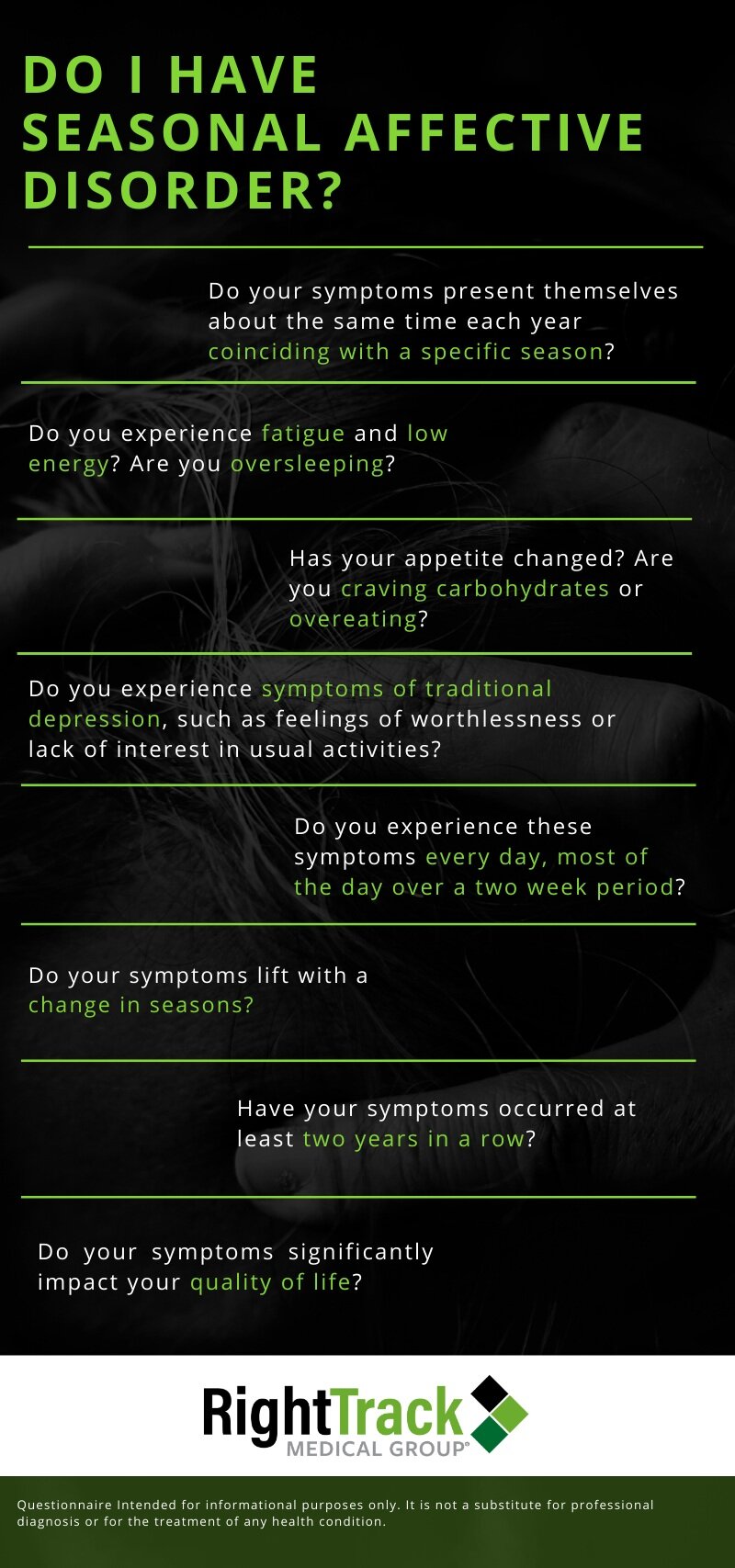Seasonal affective disorder, or SAD, is now referred to as major depressive disorder with a seasonal pattern. It is experienced as recurrent episodes of depression typically in late fall, winter, and into early spring, alternating with normal moods the rest of the year.
Major depressive disorder with a seasonal pattern is not a separate disorder; it applies to individuals who meet the full criteria for depression, coinciding with specific seasons for at least two years. People suffering from this illness typically experience depressive symptoms every day, for most of the day, over two weeks. The seasonal aspect means the depression occurs during a specific season in a way that contrasts with how the individual feels the rest of the year.
While the specific causes behind this form of depression remain unknown, factors include a drop in serotonin — a neurotransmitter that helps to regulate mood — and an overproduction of melatonin in the winter. It is also believed that major depressive disorder with a seasonal pattern is a response to the decreased light that naturally occurs during this time of year due to shortened days, as well as the colder temperatures, which keep many people indoors more.
While significantly less common, some individuals do experience depression with a seasonal pattern in the summer season. These individuals experience depressive symptoms during the warm, hot months and a healthy mood for the rest of the year.
Major depressive disorder with a seasonal pattern is more prevalent in women and is typically first diagnosed in people ages 18 to 30. It is less likely to be diagnosed in older individuals and more likely to affect those living further from the equator in more northern latitudes.
“Major depressive disorder with a seasonal pattern is more prevalent in females and is typically first diagnosed in people ages 18 to 30.”
The most common symptoms are hypersomnia (oversleeping), weight gain, overeating, and craving carbohydrates. These symptoms are less typical of depression, which is most often characterized by a lack of sleep and weight loss.
Other symptoms, which are more commonly associated with classic depression, include hopelessness, lethargy, decreased sexual interest, suicidal thoughts, lack of interest in usual activities and/or social life, feelings of worthlessness, and difficulty concentrating. Symptoms of someone experiencing this condition in the summer season may manifest differently as high degrees of agitation and restlessness, anxiety, insomnia, and weight loss.
Treatment is similar to that of depression and includes cognitive behavioral therapy and medication. Therapy strengthens one’s ability to cope with the emotional and cognitive difficulties they are experiencing. Medication may be especially effective in addressing serotonin levels.
In addition, because the majority of individuals experience this form of depression in correlation with the decreased sunlight exposure in the winter, light therapy has proven to be an effective treatment. Light therapy involves intentional, daily exposure to bright, artificial light provided by a lightbox, which simulates real sunlight. Typical indoor lighting available through lamps and lightbulbs does not deliver the same therapeutic effect. Intentional exposure to outdoor sunlight, when possible, complements this treatment.
Some treatment approaches also include an emphasis on the role of Vitamin D and exercise as complementary supports to treatment, yet these are not effective treatments in and of themselves.
If you believe you might have major depression with a seasonal pattern, begin to pay attention to patterns and track your symptoms. Do your symptoms present themselves about the same time each year, and do they significantly impact your quality of life? Also, pay attention to when your symptoms typically lift and whether this corresponds to the change in seasons. This information will be invaluable as you seek the support you need to walk through this challenging time.
“If you believe you might have major depression with a seasonal pattern, begin to pay attention to patterns and track your symptoms.”
For individuals who know that they are prone to experiencing this form of depression, consider taking a proactive stance in the seasons when you feel better. Advocate for your mental health by finding a therapist in the early fall. At the same time, ensure that exercise is a part of your lifestyle as a preventative measure.
Additional treatment ideas include getting a lightbox, planning a vacation to a warm, sunny place in January, balancing carbohydrate cravings with foods rich in serotonin, or sitting beside a window with the blinds up right after lunch when the sun is shining brightly.

This is a screening measure to help you determine whether you might have seasonal affective disorder that needs professional attention. This screening tool is not designed to make a diagnosis of seasonal affective disorder but to be shared with your primary care physician or mental health professional to inform further conversations about diagnosis and treatment.
Depressive Disorder with Seasonal Pattern: https://psychcentral.com/depression/depressive-disorder-with-seasonal-onset/
Major Depressive Disorder With A Seasonal Pattern: National Alliance on Mental Illness: https://www.nami.org/Learn-More/Mental-Health-Conditions/Depression/Major-Depressive-Disorder-with-a-Seasonal-Pattern
Seasonal Affective Disorder HelpGuide: https://www.helpguide.org/articles/depression/seasonal-affective-disorder-sad.htm
Seasonal Affective Disorder: National Institute of Mental Health: https://www.nimh.nih.gov/health/topics/seasonal-affective-disorder/index.shtml
By Elizabeth Burton, LPC, EdS, NCC for Right Track Medical Group
This article is provided for information only and is not a substitute for diagnosis or treatment by a mental health professional.